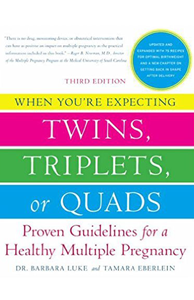The safety of home birth is a minefield topic. You can’t walk around this topic without a landmine. As an Ob-Gyn there aren’t any opinions I can have that won’t be dismissed as biased or in my own self-interest. If I wanted to avoid a fight, there’s no way I’d make home birth the subject of a blog posting. No one has ever accused me of wanting to avoid a fight.

Home birth performed in an inflatable pool
Like a cicada, home birth comes up for discussion about every 13 years when the SC Department of Health and Environmental Control (DHEC) revises their midwifery regulations. The topic was the lead story in the “Your Health” section of the Post and Courier this past Tuesday (lsausser@postandcourier.com). A public hearing is scheduled which should be a must see event. Midwives are already picketing the DHEC headquarters in Columbia and whipping up a deranged libertarian froth over “restriction of free trade” and pushing the liberal hot button “reproductive rights.”
However, any rational assessment of this issue must see that it’s not a simple “let the buyer beware” business question. The healthy delivery of newborns is the epitome of what should be a public health priority. It deserves thoughtful discussion and, foremost, public concern for both maternal and child safety.
A recently published study in the New England Journal of Medicine analyzed 80,000 delivery in Oregon. They found that in women having planned out of hospital births the probability of the baby dying in childbirth or during the first month of life was numerically small, but 2.4 times greater than for women having planned hospital deliveries. Other large epidemiologic studies (both nationally and here in South Carolina) have demonstrated a similar 2 to 3- fold increased risk of both neonatal death and serious neurologic injury with home births.
Midwives will criticize those studies due to the poor quality and depth of publically available databases. To some degree, those criticisms are valid. Databases such as birth certificates are notoriously shallow. Much of what happens in both home and hospital births goes unrecorded. Nor do they capture those deliveries that start at home but end up in the hospital when something goes awry. Midwives will also point out that these studies also document far fewer interventions and lower cesarean rates associated with home births.
There are also anecdotes which are popular, but not very convincing (or shouldn’t be). Midwives will tell you that they’ve never had a bad outcome and most of the time that is true. However, in just my own experience, I’ve seen or heard of too many unnecessary catastrophes.
The woman with prolonged labor at home who finally came to the hospital with a horrid fetal heart rate strip and delivered a brain damaged infant. The woman laboring at home after a prior cesarean who experienced a uterine rupture and fetal death. The obstetrical nurse from Columbia with twins who labored at home and then drove 50 miles to a small rural hospital without immediate cesarean capability. The complicated delivery of her breech second twin resulted in a permanent injury. A failed home birth that came to the hospital and experienced a stillbirth while hiding in the bathroom refusing to have her fetus monitored. The family and midwife who prayed while mother and baby hemorrhaged to death. The prayer worked because all bleeding eventually stops.
While these stories are horrible, it is only fair to mention that I am also aware of similar disastrous outcomes in planned hospital births. The difference is the denominator. For those of you, like me, who have spent adulthood trying to forget mathematics, the denominator is the number on the bottom. The top number are the bad things and the number on the bottom is out of how many deliveries.
In 2014 there were a little over 800 home births in South Carolina and about 40 licensed midwives (not certified nurse midwives). Simple division means that each licensed midwife delivers maybe 20 babies per year. Our greenest Ob-Gyn intern participates in 20 deliveries the first week of their residency and will be part of 800 deliveries within the first 6 months of their 4 year residency training.
These numbers mean that it’s true when midwives say they’ve never experienced an adverse delivery outcome. Uncommon things happen uncommonly. It also means that when uncommon things do happen (and they eventually will) the midwife doing a home birth will be unprepared from both a facility and experience perspective. Mark Twain recognized the simple truth of the situation, “Good judgement is the result of experience and experience is the result of bad judgement.”
Any reasonable person will recognize that delivering at home without the resources available in a hospital setting assumes some risk. Women should absolutely have the right to choose how and where they deliver. But they also deserve a fully informed decision. It is appropriate for DHEC to develop risk-based guidelines indicating who is an appropriate candidate for a home birth. Other regulations require a close association between out-of-hospital and in-hospital obstetrical providers allowing for quick transfer of care if an emergency occurs.
My experience over the past 30 years is that not all women interested in a home birth are fully informed. The liability waivers that women having home births are frequently asked to sign at their first prenatal visit mean nothing after their delivery results in a dead or damaged baby. At that point, they demand to know why they were not receiving the highest level of available care. They insist they were never aware that their baby was at risk. Whether it is punitive dollars for a dead baby or dollars for a lifetime of medical and rehabilitative care, these parents need millions. In many instances, it will be the state that provides it.
All that said, there’s no reason to believe that these proposed new regulations will resolve the safety issues surrounding home births. As in previous years, the regulations will get watered-down or exempted by DHEC or the legislature. When push comes to shove, DHEC will fail to enforce the regulations or the home birth advocates will move further underground as they have operated in the past. There is only one way to ultimately address this issue. I will tell you that solution in Part II of home births in next week’s blog posting.
While I have been employed in the OB-Gyn department of the Medical University of South Carolina for more than 30 years, this is a personal blog and the views expressed here are my own and do not reflect the views of my employer.







